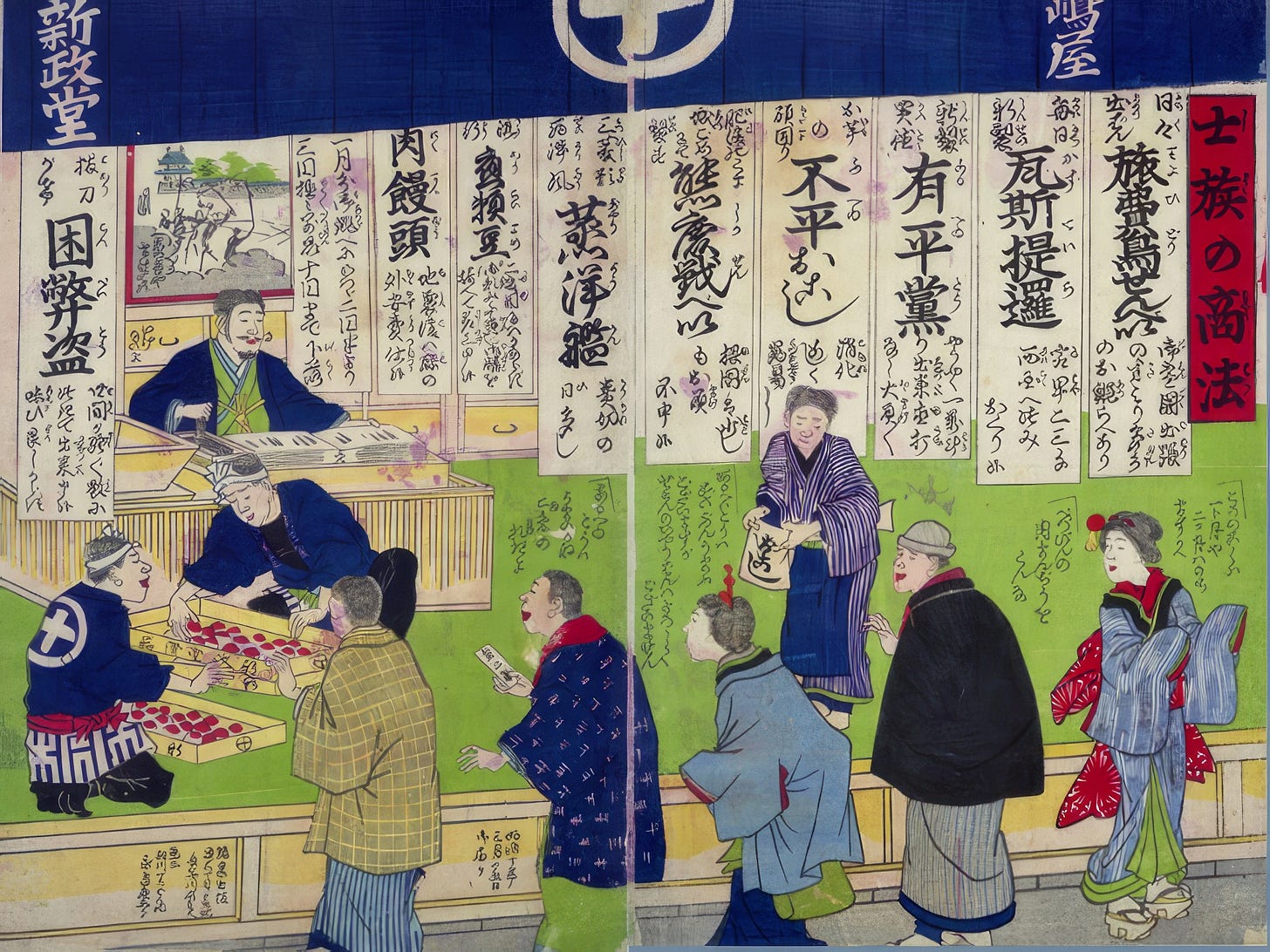Samurai’s Decline and the Emergence of Modern Japan
Why the Meiji Government Ended the Samurai Era Without Rebellion
In this article, we will explore the fate of the samurai following the Meiji Restoration and how their transition enabled Japan to establish its military smoothly in the new era.
Japan formally established its military in January 1873, approximately four years after the Meiji Restoration in 1868. This marked the beginning of conscription under the new government, a system that underwent gradual reforms and remained in place until the dissolution of the army and navy in 1945 after Japan’s defeat in World War II.
However, the smooth development of Japan’s military system was heavily influenced by the way the samurai were dealt with in the transition from the Edo period to the Meiji era.
One of the most crucial aspects of this transition was the dismantling of the samurai stipend system, a process that was carried out with extreme caution.
Due to the way "samurai imagery" was arbitrarily spread through postwar films, it is often overlooked that the samurai had already become bureaucratized during the Edo period. In reality, the majority of samurai were employed by the shogunate or domain governments and received stipends as their primary source of income.
A common misconception is that all samurai in the Edo period belonged to a "ruling class." However, this is inaccurate. The idea that Edo period was purely feudal only gained widespread acceptance in Japan after World War II, influenced by the United States' postwar educational policies. Prior to that, the perception of the Edo period as a feudal society was not as dominant.
This calls for a reassessment of what it meant to be a "samurai." The typical assumption that all samurai were equivalent to feudal lords is incorrect. There was a significant distinction between the higher-ranking samurai close to the daimyō and the lower-ranking samurai.
In fact, the Meiji Restoration was largely driven by lower-ranking samurai, who revolted against the ruling daimyō. This was particularly evident in Chōshū domain (Yamaguchi prefecture), whose samurai played a leading role in the restoration. By contemporary standards, they were considered low-ranking samurai.
With the success of the Meiji Restoration, the new government undertook major institutional reforms, among which the "Chitsuroku Shobun (秩禄処分)” (Abolition of Stipends) in 1876 was a key policy. This was implemented with the aim of dismantling the feudal domain system.
At this point, samurai groups attached to their respective domains were seen as an unnecessary burden by the new government. The government, eager to build a modern state, faced an early fiscal crisis. From a financial standpoint, eliminating samurai stipends became an urgent issue.
However, abruptly abolishing the stipend system that had sustained the samurai class for over 260 years could have led to widespread unrest. Since there were still many armed samurai across Japan, the government feared that any misstep in handling their transition could trigger another rebellion.
Thus, government officials carefully devised a phased approach to dissolve the samurai class, ensuring social stability until the new government was firmly established. This process unfolded in three key stages:
Grants for Farming and Commerce (帰農商者への賜金 1870-1871): Financial aid was provided to former samurai who left their positions to encourage them to transition into farming or commerce.
Compensation for Stipend Surrender (家禄奉還者への賜金 December 1873): Samurai who voluntarily relinquished their stipends received six years’ worth of funds to support entrepreneurial endeavors.
Public Bonds in Exchange for Stipends (金録公債交付 August 1876): The government issued bonds to samurai whose stipends were forcibly abolished, mitigating the impact of the sudden loss of income.
These measures paved the way for the ultimate implementation of the "Chitsuroku Shobun” (Abolition of Stipends) in 1876, which marked the final step in dismantling the samurai class.
In simple terms, the government encouraged samurai to sever ties with their domains while providing financial support to ease their transition. This careful and calculated approach allowed for a relatively smooth shift, ultimately leading to the most crucial reform of the Meiji era—the Abolition of Domains and Establishment of Prefectures (Haihan-Chiken 廃藩置県) in 1871.
This reform completely dismantled the Tokugawa regime's domain system and established a centralized government led by modern bureaucrats. It was a pivotal moment in Japan’s transformation into a modern nation-state.
The combination of the Haihan-Chiken and Chitsuroku Shobun forced the samurai to relinquish their dependence on domains. To ease their transition, the government provided temporary pensions for a few years, encouraging them to seek new careers in emerging industries and maintaining social stability in the meantime.
Of course, this was a cunning strategy to suppress potential resistance against the government. In reality, the pension system for former samurai was only a temporary measure, and by 1876, all remaining support programs were terminated. With this, the stipend system of the Edo period completely disappeared, marking the true end of the samurai era.
In other words, this was the moment when the samurai ceased to exist in Japan. What made this transition remarkably smooth was, as previously mentioned, the fact that the samurai class had already become bureaucratic by the Edo period.
One individual who thoroughly understood this reality and played a key role in establishing the new bureaucratic system was Yamagata Aritomo (1838-1922), a samurai from Chōshū who became a central figure in the new government for many years.



